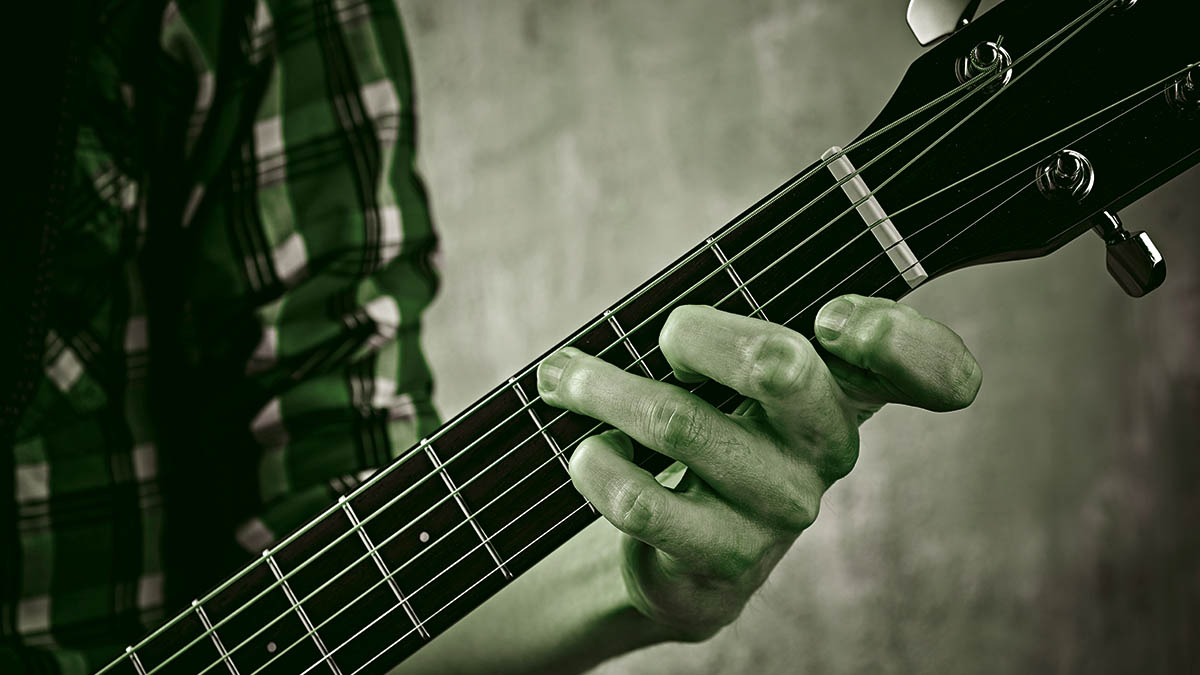Spice up your slash chord skills with these 10 tips on how to use them in your playing
Learn how to add some sonic intrigue to your progressions with rich, complex sounds, minus the complicated theory

It’s tempting to think that lush, sophisticated chords are the sole preserve of jazz players and ‘schooled’ guitarists. As it turns out though, there’s an easy way for any guitarist to get started with some advanced harmony – and that’s by putting an ‘unexpected’ note in the bass.
By just changing the root note of a basic chord, you gain instant access to a whole world of sonic color that goes way beyond simple major and minor shapes.
These shapes are known as ‘slash chords’ – the idea being that the chord is shown beside its new bass note... after a slash mark, of course! So C/G is a C chord over a G bass note, and it’s called ‘C over G’. Get it?
The chord names can get pretty freaky, but it really is a simple idea. Right, that’s the theory done. Let’s dive right in at the deep end with 10 musical examples for you to try.
Example 1. Inversions
An inversion is when you replace a bass note with another note from within the chord. This changes the flavor of the chord and also provides an opportunity to create melodies in the bass. Here in our first musical example, a simple chord progression now has a satisfying descending bass melody.
Example 2. Beatles-style arpeggios
Much like the chords in our previous example, there’s a Beatles-like quality here in these arpeggios. In fact, Paul McCartney is a master in creating melodic basslines through inversions that are integral to the song.
Example 3. Blues turnaround
Another common use for inversions is in a blues turnaround. The following example shows one of many possibilities of creating a bassline melody from just three or so basic chords. You can easily discover more with a bit of experimenting.
All the latest guitar news, interviews, lessons, reviews, deals and more, direct to your inbox!
Example 4. Pop/rock arpeggios
Again, here the upper part of the chord remains static as a bassline moves, thus ‘recoloring’ the upper chord. Examples abound in pop and rock music, from The Beatles’ Dear Prudence and Oasis’ Champagne Supernova to the opening of The Police’s Every Little Thing She Does Is Magic.
Example 5. Jazz vibes
Here’s another example in a minor key. The upper C minor chord remains the same in all but the very last chord, while the bassline moves chromatically. You might hear a similar idea in jazz standards My Funny Valentine and It Don’t Mean A Thing, but it is a fundamental concept and you can hear it in Led Zeppelin’s Stairway To Heaven.
Example 6. Static bass with changing chords
Here, the bass notes remain the same while the upper chords move, resulting in a series of slash chords. It’s a great way to ’anchor’ the sound around one single root note. You can hear a similar idea in Kenny Burrell’s Midnight Blue and Bon Jovi’s Wanted Dead Or Alive.
Example 7. Filmic sound
Once again, the bass is static and the upper chords change, this time to imply the Lydian mode. This is a common technique in film music, and chances are you’ve heard it many times. You’ll also hear it on Fleetwood Mac’s Sara, Joe Satriani’s Flying In A Blue Dream and Peter Gabriel’s Down To Earth.
Example 8. Aeolian mode idea
This example is in D minor, again with a static bass and upper chords that change (from Dm to C, Bb and Am). You’ll hear a similar idea in Phil Collins’ In The Air Tonight. We’re in D Aeolian, but any mode can be employed in this way.
Example 9. Implying a cadence
Another useful pedal tone approach – instead of using the root note – is to use the 5th of the key, and it’s a clever way to imply a sort of elaborated V-I cadence.
Don’t know what that means? Well, try playing E7 to A, or D7 to G. It’s that feeling like there’s a natural conclusion to a chord change. Our riff is played over an E bass note before finishing on an A chord.
Example 10. The ‘up one tone’ bass note
These slash chords are essentially the same in that they are major or dominant chords with a bass note one tone higher than the root. Hear it at 0:32 in The Jacksons’ Blame It On The Boogie, setting up a cadence, and in the opening chords to Herbie Hancock’s Maiden Voyage, which uses the chord liberally and without resolution.










